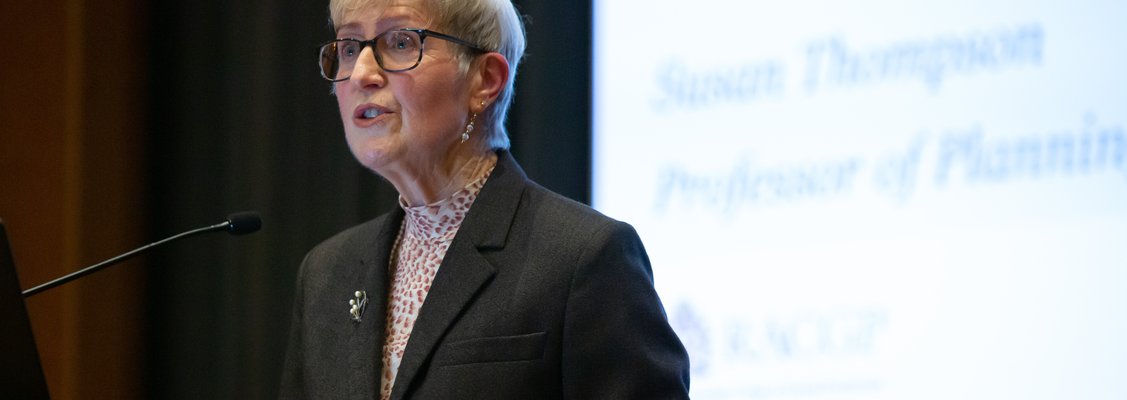
Specialists in Life: Connecting together to create healthy built environments for everyday living. Please click here to view presentation slides.
On 31 August, Professor Susan Thompson delivered the 2019 Charles Bridges-Webb oration for the Royal Australian College of General Practitioners.
Professor Charles Bridges-Webb was a foundation member of the RACGP when he joined in 1959 and one of its most dedicated researchers. Since 2015, the oration has honoured Professor Charles Bridges-Webb’s contribution to the medical profession, his pursuit of excellence, and the mentoring and inspiration he has provided to generations of general practitioners and researchers. In his memory, those invited to deliver the oration are prominent contributors to communities and health from a range of disciplines.
In opening her presentation, Professor Thompson declared it a great honour to be invited to deliver the 2019 Charles Bridges-Webb oration for the RACGPs. She went on to say:
“In my work in healthy built environments – now over 15 years – it’s been a guiding principle to connect across the disciplines of health and urban planning and design. To speak to you tonight is part of that endeavour and a great privilege.”
“In planning for my talk tonight, I thought it a wonderful opportunity to link with the notion of GPs being specialists in life. And part of understanding people’s lives is the context in which they live those lives – the environments where they reside, work, play and connect with each other.”
“That’s the focus of my work as an urban planner – so perhaps in some ways we are both specialists in life – and certainly joined by the ambition of helping all to live their lives well.
Tonight, I will give you an overview of healthy built environments. I hope to join some dots between the health challenges we face today and how our built environments can better support people’s health as part of everyday living.”
The abstract of Professor Thompson’s presentation appears below:
Chronic diseases, affecting both our physical and mental wellbeing, are in plague proportions across the globe. And yet, many of these debilitating conditions can be prevented by adopting a healthy lifestyle – plenty of exercise, a good diet, stress control and meaningful social engagement. However, these behaviours are not necessarily easy to undertake on a regular basis. This is particularly so when we consider that the places where we live and work, and the transport we use to get around, encourages sedentary behaviour, keeps us isolated, as well as rendering us time poor and anxious. But this is changing. A growing international body of interdisciplinary research and practice evidence demonstrates that the environments where we conduct our daily lives play a critical role in determining physical and mental health. It is possible to design, plan and manage environments that support people being physically active (in both their recreation and transport). In addition, well designed places can help to socially connect individuals and groups, and facilitate access to affordable, culturally appropriate, fresh and nutritious foods. In turn, there are broader health and sustainability benefits for the planet, upon which all life ultimately depends. Nevertheless, there are challenges in delivering a healthy built environment as population numbers soar and more and more of us live in denser, crowded cities. I will conclude by presenting some of these challenges, as well as reflecting on how medical practitioners can connect with urban planners to create healthy built environments for the benefit of their patients seeking to be healthy as part of everyday living.